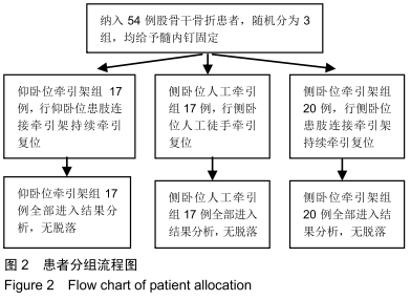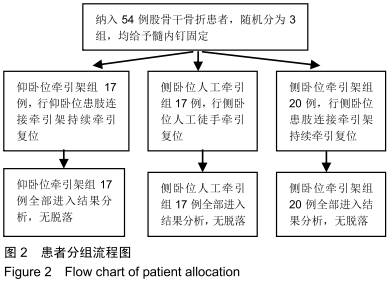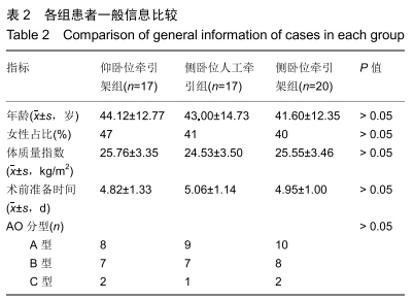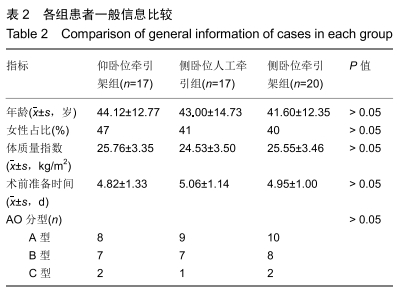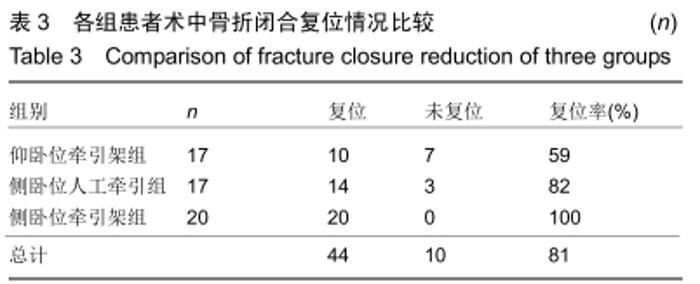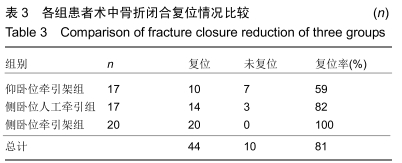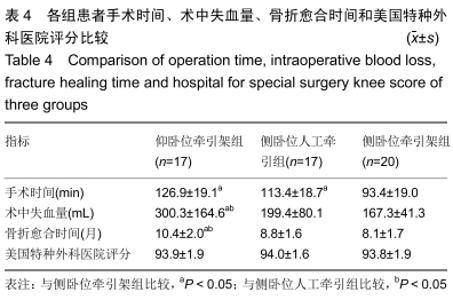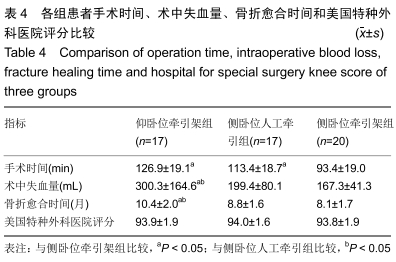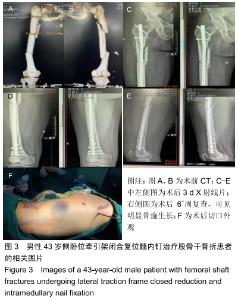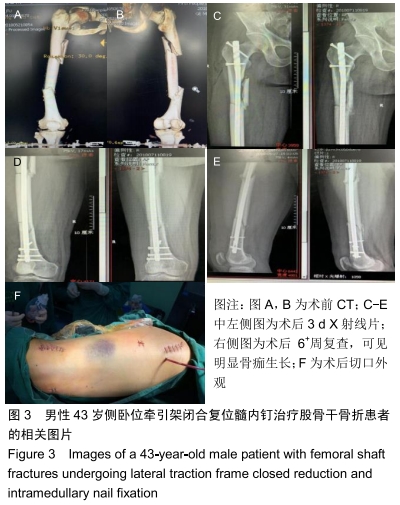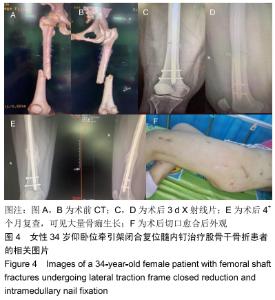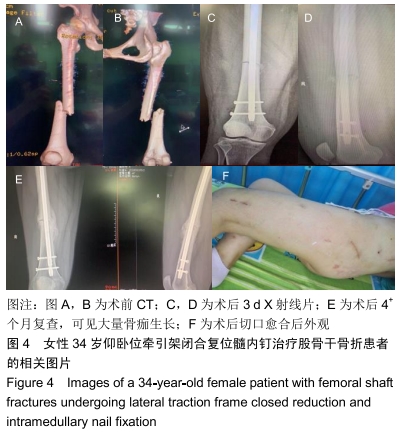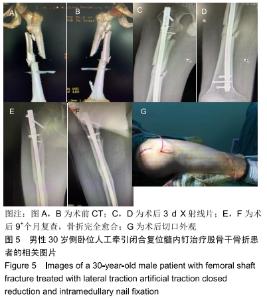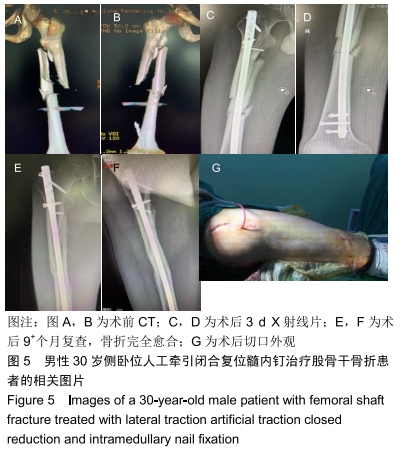[1] BUCHOLZ RW, JONES A. Fractures of the shaft of the femur. J Bone Joint Surg Am. 1991;73(10):1561-1566.
[2] RICCI WM, GALLAGHER B, HAIDUKEWYCH GJ. Intramedullary nailing of femoral shaft fractures: current concepts. J AmAcad Orthop Surg. 2009; 17(5) :296-305.
[3] KESEMENLI CC, TOSUN B, KIM NS. A comparison of intramedullary nailing and plate-screw fixation in the treatment for ipsilateral fracture of the hip and femoral shaft. Musculoskelet Surg. 2012;96(2):117-124.
[4] CHAN KC, GILL GS. Cemented hemiarthroplasties for elderly patients with intertrochanteric fractures. Clin Orthop Relat Res. 2000;371(371):206-215.
[5] 付备刚,王秀会,蔡攀,等.闭合复位与切开复位交锁髓内钉内固定治疗股骨干骨折的疗效比较[J].中国骨与关节损伤杂志, 2015,30(2): 151-154.
[6] PARK KC, OH CW, BYUN YS, et al. In-tramedullary nailing versus submuscularplating in adolescent femoral fracture.Injury. 2012; 43(6):870-875.
[7] 祖波,刘立明. 闭合复位交锁髓内钉固定治疗股骨干骨折[J].临床骨科杂志,2014,17(1):81-82.
[8] 史海山.闭合复位股骨干骨折髓内钉与解剖钢板置入内固定:骨折稳定性比较[J].中国组织工程研究,2015,19(17):2724-2729.
[9] 孙利,李国胜,张义峰,等,侧卧位闭合复位交锁髓内钉内固定治疗股骨干骨折[J].中国骨与关节损伤杂志,2014,29(4):338-340.
[10] INSALL JN, RANAWAT CS, AGLIETTI P, et al. A Comparison of models of total knee -replacement prostheses. J Bone Joint Surg (Am).1976;58(6):754-765.
[11] 邱雪立.应用带锁髓内钉治疗下肢长干骨骨折疗效分析[J].中国基层医药,2005,12(2):188-189.
[12] 王秋根.髓内钉固定治疗成人股骨干骨折的相关问题[J].中华创伤杂志, 2017,33(1):6-9.
[13] 孙涛,高韧,崔林江.交锁髓内钉治疗股骨干骨折疗效分析[J].中华创伤骨科杂志,2005,7(6):586-587.
[14] 侯德胜,鲁成,刘磊,等.有限切开复位带锁髓内钉治疗股骨干骨折[J].临床骨科杂志,2017,20(5):609-610.
[15] 乔添柱,沙宪辉,刁振斌,等.小切口有限切开复位带锁髓内钉治疗股骨干粉碎性骨折[J].临床医药文献电子杂志,2017,4(39):7621-7621.
[16] 朱治国,于远洋,侯林俊,等.闭合复位带锁髓内钉治疗股骨干骨折[J].中国骨伤,2014,27(10):819-822.
[17] 王伟,胡继坤,罗荣,等.闭合复位交锁髓内钉治疗股骨干粉碎性骨折的临床体会[J].浙江创伤外科,2013,18(6):902-903.
[18] 闫军,周劲松,李雷,等.闭合复位加长型股骨近端防旋髓内钉内固定治疗股骨干骨折合并股骨粗隆间骨折[J].中国微创外科杂志,2015, 15(2):163.
[19] 赵勇,周大鹏,田竞,等.闭合复位股骨大粗隆入路交锁髓内钉内固定治疗股骨干骨折[J].中国骨与关节损伤杂志,2012,27(10):928-929.
[20] HIERHOLZER C, GLOWALLA C, HERRLER M, et al.Reamed intramedullary exchange nailing:treatment of choice of aseptic femoral shaft nonunion. J Orthop Surg Res. 2014; 9(1) :88.
[21] COURT-BROWN CM, KEATING JF, CHRISTIE J, et al. Exchange intramedullary nailing. Its use in aseptic tibial nonunion. J Bone Joint Surg(Br). 1995;77(3):407-411.
[22] 申国庆,张浩,高发旺,等.带锁髓内钉治疗股骨骨不连[J].中国骨伤, 2011,24(1):62-65.
[23] 张德常,丁欢,陆雄伟,等.闭合复位髓内钉内固定治疗复杂股骨干粉碎骨折[J].实用骨科杂志,2011,17(4):357-359.
[24] 王红川,楼华,王永才,等.闭合复位交锁髓内钉内固定治疗股骨干骨折[J]. 中国修复重建外科杂志,2008,22(6):700-702.
[25] 魏俊强,金宇,王新宇,等.不同体位髓内钉治疗肥胖患者股骨干骨折的临床疗效[J].使用医学杂志,2016,32(2):275-277.
[26] 王智勇,陈珂,田可为,等.双摇杆技术在成人股骨干骨折复位内固定术中的应用[J].中国骨伤,2015,28(7):606-608.
[27] 魏俊强,吴希瑞,张英泽,等,仰卧位与侧卧位闭合复位髓内钉内固定治疗股骨干骨折的疗效比较[J].中华创伤骨科杂志, 2013,15(8): 660-665.
[28] CARR JB, WILLIAMS D, RICHARDS M. Lateral decubitus positioning for intramedullary nailing of the femur without the use of a fracture table. Orthopedics. 2009;32(10):721-724.
[29] 冯国栋.闭合复位交锁髓内钉内固定治疗不稳定性胫腓骨骨折疗效观察[J].医药前沿,2017,7(8):149-150.
[30] 周大鹏,赵勇,项良碧,等.阻挡螺钉技术在闭合复位髓内钉内固定治疗股骨干骨折中的应用[J].中国矫形外科杂志,2010,18(20): 1731-1733.
[31] 梁卫东,王爱军,李军,等.闭合复位髓内钉固定结合Poller钉技术治疗股骨干或干骺端骨折[J].中国临床医生杂志,2016,44(1):69-71.
|
